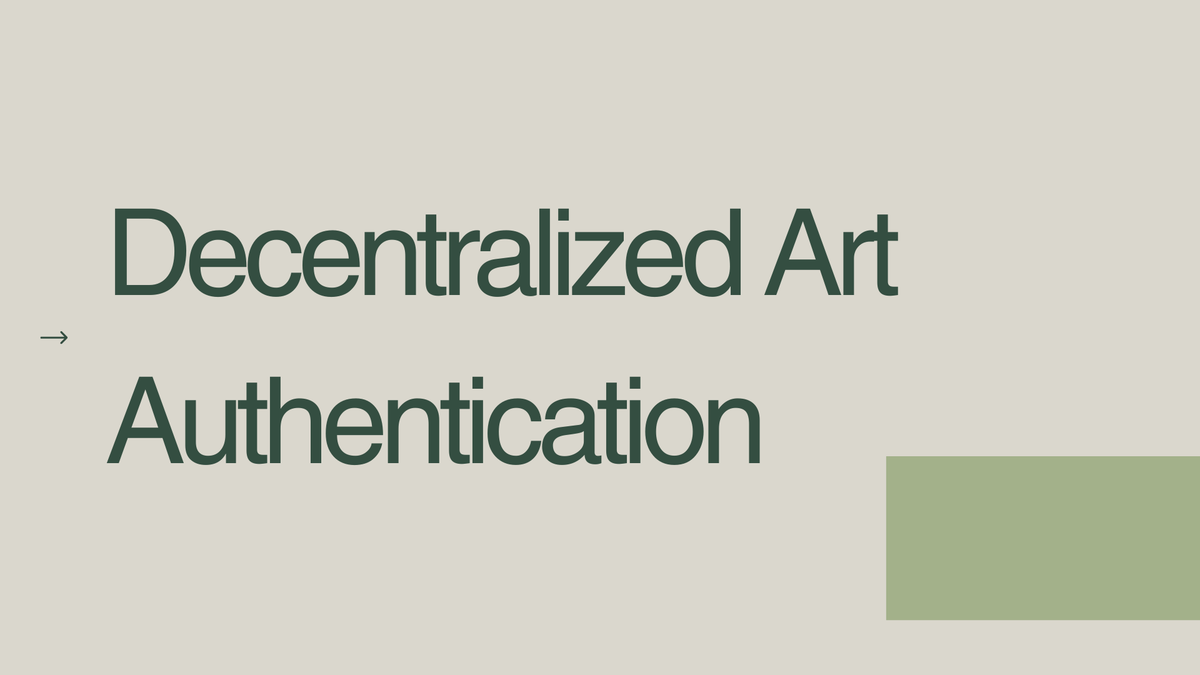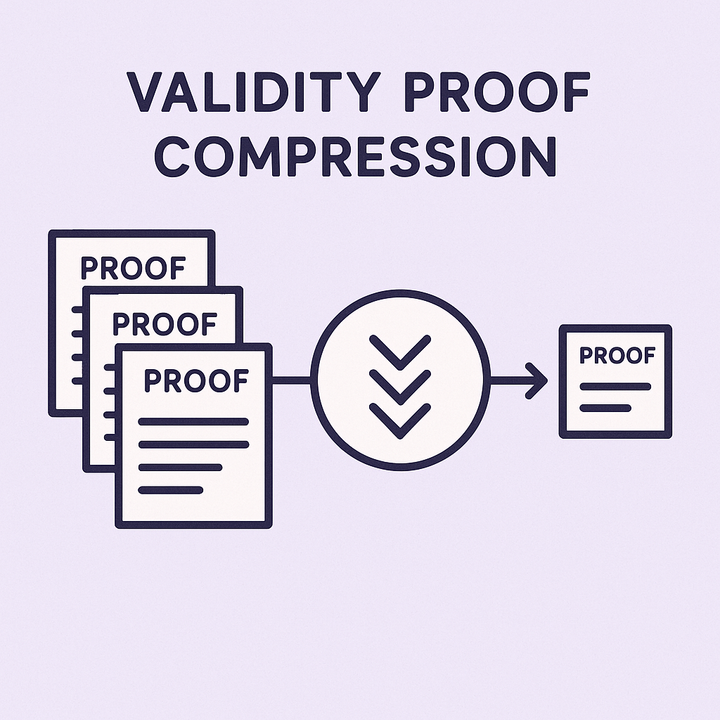Decentralized Art Authentication: Provenance, Forgery Prevention, and Market Trust

Introduction
The historical significance, monetary value, and cultural impact of artworks hinge on their legitimacy, and that legitimacy is often determined by their provenance, or documented history. However, conventional art markets have long wrestled with challenges such as forged artworks and manipulated provenance records. These issues disrupt market integrity and erode trust among collectors, galleries, and institutions. In response, decentralized technologies, particularly blockchain, have emerged as innovative solutions that offer immutable registration of art histories and secure verification processes. This shift not only promises to prevent forgery but also rebuilds trust in art markets by providing transparent, tamper-proof records of an artwork’s lifecycle.
What is Decentralized Art Authentication?
Decentralized art authentication leverages the principles of distributed ledger technology (DLT) to validate and record the authenticity and history of artworks. Unlike traditional centralized methods that depend on single or limited authorities, decentralized systems operate on a network-wide consensus. This ensures that every transaction, whether it’s a sale, a transfer, or even a restoration update, is permanently recorded in a secure, immutable ledger.
Blockchain is at the heart of these systems. Each artwork can be assigned a unique digital token or NFT (non-fungible token) that encapsulates its history and provenance data. Smart contracts, self-executing contracts with terms directly written into code, automate verification processes and enforce compliance without human intervention. These contracts ensure that every stakeholder involved, be it the artist, gallery, or collector, abides by the agreed-upon terms when transferring or validating the piece.
Provenance Tracking in Art
Provenance refers to the documented history of an artwork from its creation to its current owner. This record includes details about previous sales, exhibitions, restorations, and sometimes even the historical and cultural context of the piece. A well-documented provenance is integral to establishing an artwork’s authenticity and market value.
Historically, provenance records have often been maintained in paper form or through centralized databases. Such systems, however, are vulnerable to human error, deliberate manipulation, and sometimes even outright fraud. Gaps or inconsistencies in the documentation can lead to ambiguity over an artwork’s authenticity, allowing forgeries to enter the market. Establishing a reliable provenance, therefore, is not just about verifying the creator's identity; it is about ensuring the integrity of every step in an artwork's journey.
Forgery Prevention Through Decentralized Systems
One of the pivotal benefits of decentralized art authentication is its robust prevention of forgery. Traditional mechanisms of certifying art authenticity can be subverted by forging certificates or falsifying historical records. In contrast, blockchain technology creates an immutable digital footprint for each artwork, a record that is near-impossible to alter once confirmed by the network.
How Blockchain Enhances Authenticity
- Immutable Records: Every transaction or change in ownership is recorded on a distributed ledger. Once a block is added to the blockchain, the information it contains is permanent and publicly verifiable. This greatly reduces the possibility of tampered or forged documentation.
- Smart Contracts: These digital agreements automatically execute when certain conditions are met. In an art transaction, a smart contract can verify provenance details before the sale is completed, ensuring that both the buyer and seller adhere to the pre-established terms.
- Digital Tokens and NFTs: By tokenizing artworks, each piece is assigned a unique identifier that can be tracked from creation to sale. These digital tokens serve as certificates of authenticity, rendering fraudulent replications easily detectable.
Market Trust: Restoring Confidence in the Art World
A significant challenge for the art market has always been the issue of trust. Buyers, sellers, and institutions rely on accurate, robust documentation to validate not only the authenticity but also the historical value of an artwork. Suspicion and uncertainty lead to market inefficiencies, reduced liquidity, and a general sense of mistrust among collectors. With fake artworks and fraudulent provenance reports rampant, establishing confidence can be difficult.
Decentralized technologies offer a solution by ensuring transparency and accountability. When all transactions are recorded on a public ledger, every participant in the market, from museums to private collectors, can verify the complete history of an artwork. This transparency reassures market participants, as it becomes straightforward to trace the origins and previous ownership of a piece.
Moreover, the decentralized model discourages fraudulent behavior. Attempts to create a false history or counterfeit documents become futile when every alteration generates a visible data trail that can be audited by anyone. The assurance of an immutable record not only deters forgery but also ensures that all parties can rely on confirmed historical data.
Integration with Traditional Systems
The adoption of decentralized paradigms does not necessarily imply a complete overhaul of traditional authentication methods. Instead, there is a growing trend toward the hybridization of systems, where blockchain technology complements existing structures. Museums, auction houses, and galleries are increasingly open to integrating decentralized records with their conventional databases, allowing them to retain historical documents while enhancing their verification processes.
This integration ensures that legacy systems benefit from improved security and transparency, which, in turn, increases overall trust in the art market. The shift toward decentralized authentication is not only a technological upgrade but also a paradigm change in how art is managed and perceived.
Future Implications and Limitations
The Promising Future of Decentralized Art Authentication
The advancements in decentralized authentication signal a promising future for the art market. As blockchain platforms mature and gain wider acceptance, we can anticipate several positive trends:
- Increased Regulatory Compliance: Governments and regulatory bodies are examining blockchain’s potential to provide auditable, transparent records. This could lead to enhanced legal frameworks that support decentralized technologies, further legitimizing their use in the art market.
- Enhanced Collaboration: Artists, galleries, and auction houses may form consortia to create standardized protocols for blockchain-based authentication. Such cooperation could drive widespread adoption, standardizing practices across borders.
- Global Accessibility: Decentralized systems offer a truly global ledger that is accessible to anyone with an internet connection. This democratization of art records opens up new markets, enabling collectors from regions previously underserved by traditional art institutions to participate confidently.
Limitations and Challenges
Despite its many advantages, decentralized art authentication is not without challenges:
- Adoption Barriers: Many stakeholders in the art market, especially smaller galleries and private collectors, may be hesitant to adopt new technologies due to a lack of technical understanding, integration costs, or simply resistance to change.
- Scalability: The scalability of blockchain networks remains a concern. As more records and transactions are added, the efficiency and speed of these networks need to keep pace with demand. Technological advancements continue to address these concerns, but scalability remains a notable challenge.
- Interoperability: With a variety of blockchain platforms emerging, ensuring that different systems can communicate and integrate seamlessly is essential. The creation of universal standards might require significant cooperation across multiple stakeholders.
- Legal and Regulatory Hurdles: While decentralization promises reduced fraud, it also raises questions about data privacy, intellectual property rights, and cross-border regulatory compliance. Policymakers and industry leaders are still in the early stages of navigating these complexities.
Conclusion
Decentralized art authentication is revolutionizing the art market by offering innovative solutions to longstanding issues of authenticity, provenance, and market trust. By leveraging blockchain’s immutability, smart contracts, and digital tokenization, stakeholders across the art world, from collectors and galleries to auction houses and museums, can now rely on secure and transparent verification methods. This transformative approach not only helps prevent forgery but also rebuilds trust, ensuring that every artwork carries an indisputable historical record.
As the industry continues to evolve, decentralized systems will likely become a critical component of how art is managed, bought, and sold. While challenges remain, such as scalability, adoption barriers, and regulatory uncertainties, the long-term benefits of enhanced transparency and trust are undeniable.
References
- Artnet –https://www.artnet.com Artnet offers industry insights into art authentication, forgery cases, and market trends related to digital provenance systems.
- Artsy –https://www.artsy.net Artsy provides extensive discussions on how blockchain and decentralized technologies impact the authenticity and provenance of artworks.
- CoinDesk –https://www.coindesk.com CoinDesk covers blockchain innovations in various sectors, including art authentication and market trust.
- TokenX Blog –https://www.tokenx.is/blog/art-authentication-and-provenance-secured-by-blockchain/ This blog explores the role of blockchain in preventing art forgery and securing provenance records.
- Harvard Business Review –https://hbr.org HBR provides insights into how decentralized systems are transforming industries, including the art world.
MITOSIS official links:
GLOSSARY
Mitosis University
WEBSITE
X (Formerly Twitter)
DISCORD
DOCS

Comments ()